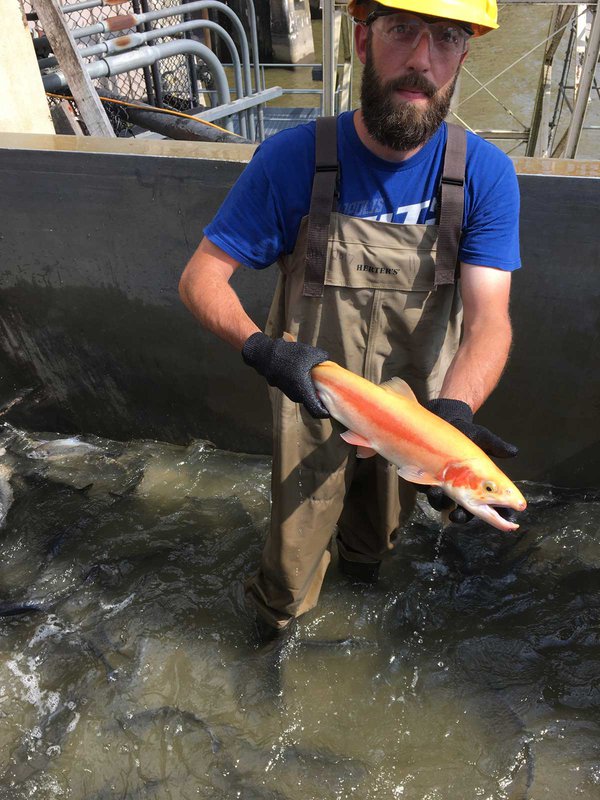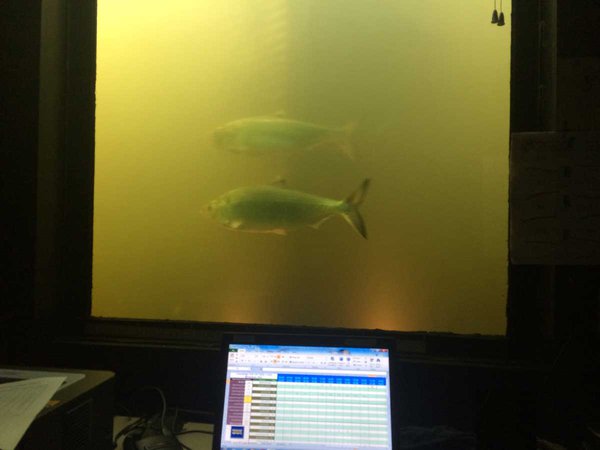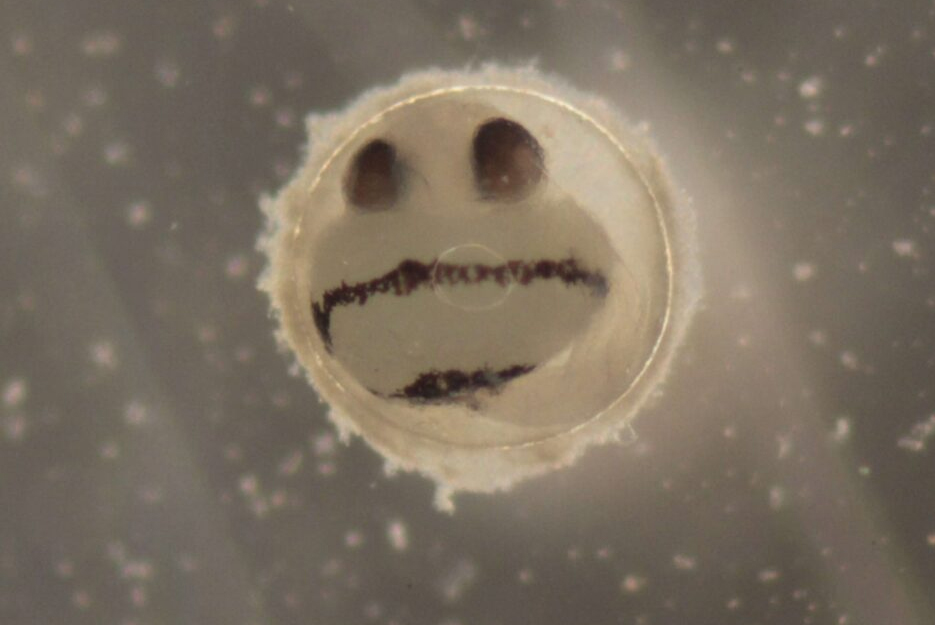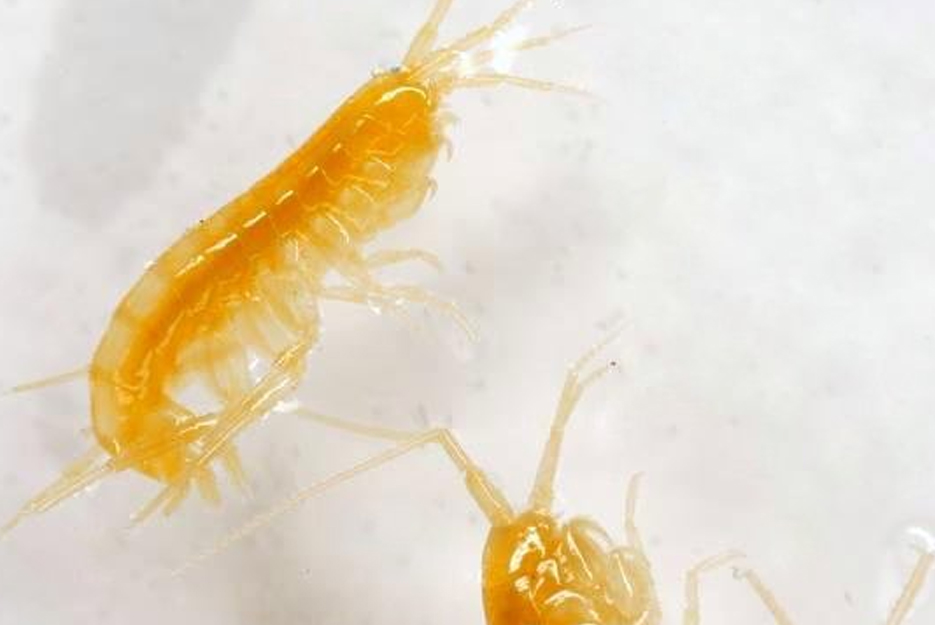Hydroelectric facilities as well as various low head dams have been deterrents to natural upstream fish migration for many years. Blockages (man-made or natural structures) may prevent anadromous fish from reaching their historic upstream spawning grounds, which may hamper spawning success and prevent fish populations from increasing or sustaining current levels. There are two main techniques that can be employed to assist fish species in reaching the most preferred location: volitional fish passage and trap and truck. Although both are acceptable methods of assisting fish migration, they both come with challenges.
Volitional Fish Passage
Volitional fish passage requires the safe and efficient operation of various fishways that attract and collect several migratory and resident fish species. To do so successfully requires qualified technicians identifying and counting these fish as they swim by a viewing window after being deposited in the facility’s fish trough or flume.
A lot less manpower is required to conduct volitional fish passage operations, so the challenges of this program revolve around efficient and safe operation of the fishway. Pre-season and in-season maintenance and constant vigilance by operating staff is critical to prevent equipment malfunctions that could render the facility nonoperational for several days during critical segments of the fish migration period. Critical components of the facility include the water attraction system, the fish handling system, and the viewing/counting system. The attraction water flow through a facility’s entrance gates must be properly adjusted to effectively attract the target species. One misconception of fishway operation is the assumption that if the facility is operated to mandated or suggested specifications, then fish passage will be maximized. This is not necessarily the case. The Normandeau team has learned over the years that the operating staff must constantly watch for changes in fish behavior to make adjustments to various parts of the facility to maintain fish attraction. Operating a fishway based on design specifications is a valuable starting point, but relying on those specifications at all times may lead to decreased performance and a certain complacency. The operating staff must be given the ability to make changes to operating specifications when and if necessary. Fishway operating teams not only need to know how to operate the facility, but they also need to know how to “fish” the facility.
Trap and Truck Program
Fish passage utilizing a trap and truck program also requires the use of qualified and trained technicians. These specialists manually sort out the target species (American Shad, River Herring, Atlantic Salmon, etc.) from a sorting tank, place them in temporary holding tanks or directly into specialized transport tank units, and then safely haul and release them at locations upstream of the barriers to allow the fish to reach a suitable spawning habitat. These programs are generally considered to be an interim step in the restoration process. Most resource agencies prefer to have fish migrate “naturally” or volitionally to improve or increase fish populations; however, blockages (dams) and the uncertainty of fish actually reaching a suitable spawning habitat make trap and transport a viable option. A fish swimming upstream utilizing 2 to 4 fishways may take 10 to 30 days to reach a suitable spawning habitat, whereas those same fish can be successfully transported to a specified location in a matter of hours.
The trap and truck program involves the actual handling of several fish species, so additional stress to the fish is a serious concern that may impact the overall success of the program. Extreme care and training are critical to ensure that the majority of the fish collected for transport are healthy and survive all phases of the operation with the end result being successful stocking in a suitable spawning habitat. This option also requires significant manpower to conduct all aspects of the program, so safety guidelines and operational protocols for individual tasks are required. The resource agencies generally mandate that trap and transport operations must not exceed 5% mortality for all phases of the program. This means that during lift operation, fish sorting, fish holding, and fish transport steps, the overall cumulative mortality rate must not exceed 5%. Normandeau has successfully conducted juvenile and adult American Shad transport programs without exceeding the required mortality rate.
Normandeau Associates, Inc. has studied fish migration at or near many dams and has participated in volitional and trap and transport passage programs since the early 1970s. Fish passage/migration studies have included the use of various technologies such as basic floy tagging, radio telemetry, acoustic telemetry, and PIT tag. Each technology allows biologists/researchers to learn and monitor various fish behaviors such as migration timing, swim speed between various locations, rates and time of passage at specific facilities, successful or unsuccessful passage attempts, and date and time of recapture. This technology paired with the experience, knowledge, and careful methods of relocation have helped Normandeau successfully reduce the impact hydroelectric facilities have on local marine life at various locations for the last 50 years.






